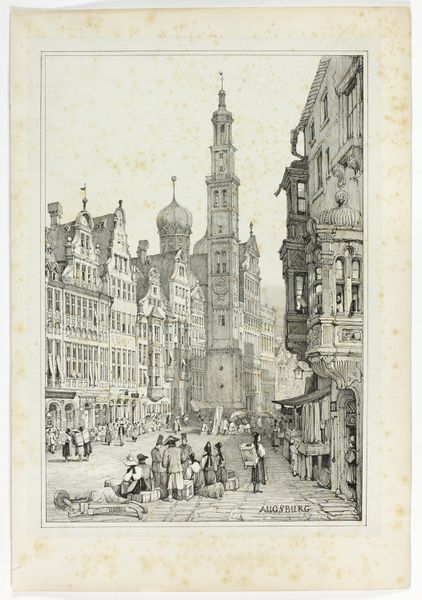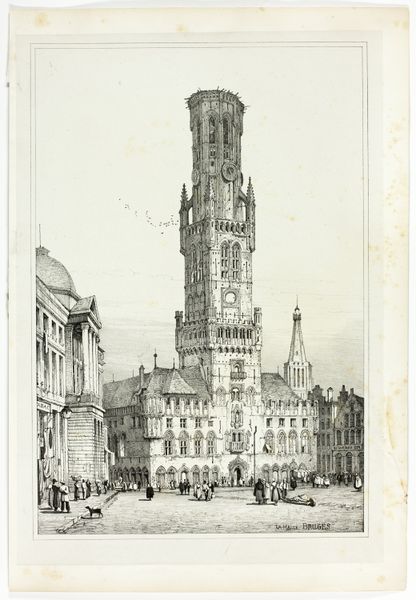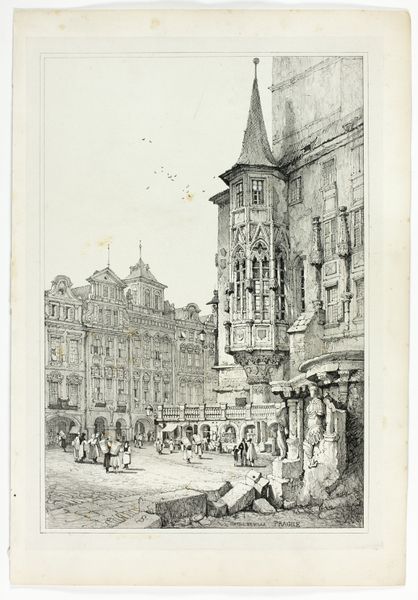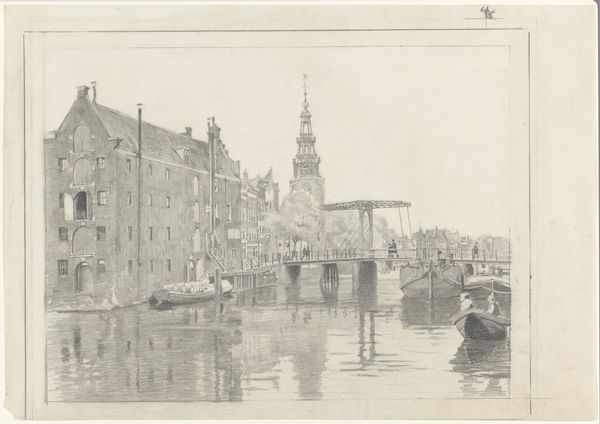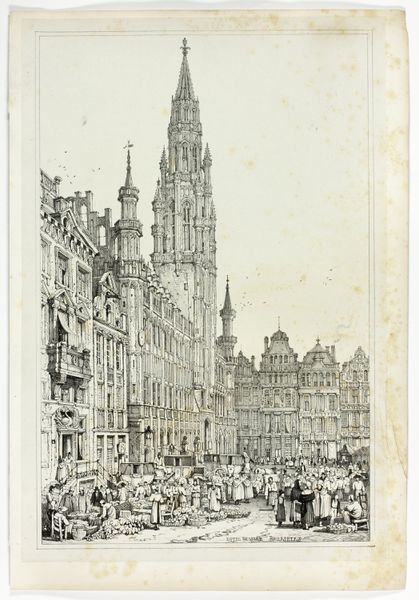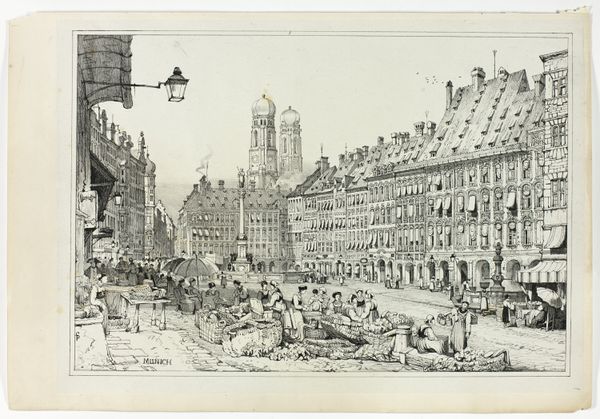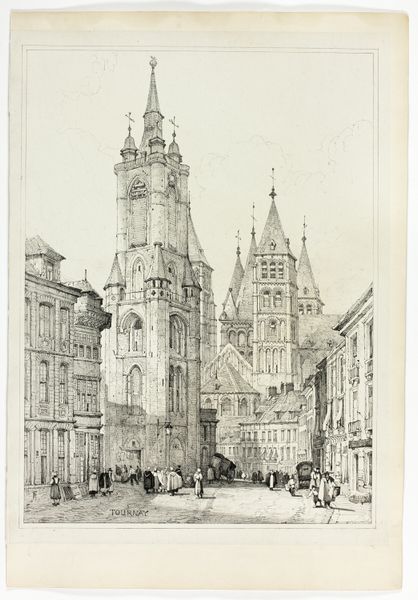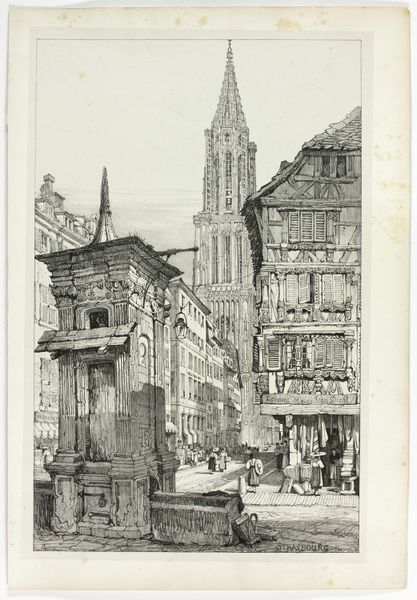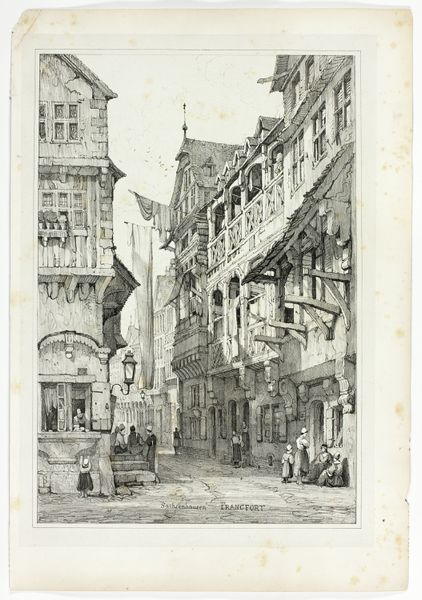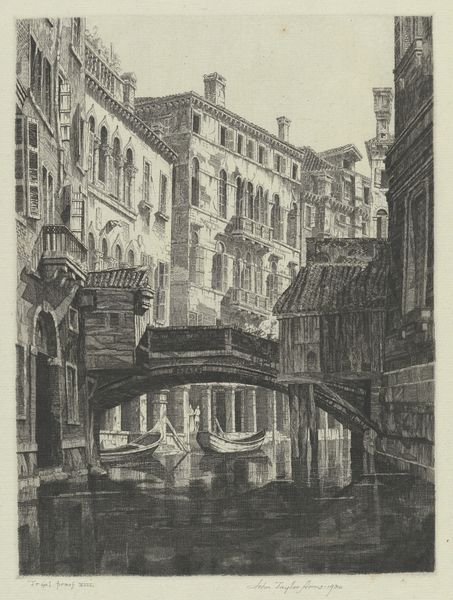
drawing, lithograph, print, paper
#
drawing
#
lithograph
# print
#
landscape
#
paper
#
romanticism
#
cityscape
Dimensions: 290 × 425 mm (image); 310 × 445 mm (primary support); 345 × 500 mm (secondary support)
Copyright: Public Domain
Editor: Samuel Prout's "Hotel de Ville, Utrecht," a lithograph drawing from 1833, captures a vibrant cityscape. What strikes me is how the textures, achieved through the lithographic process, seem to bring this scene to life, making me wonder how the act of reproducing images influenced artistic creation in the 19th century. What do you see when you look at this print? Curator: This lithograph is a fascinating example of the democratization of art through reproduction. Consider the social context: the rise of a middle class eager to consume images, not just own original artworks. Prout is responding to that market. Look closely at the marks on the paper – each line, each shade was carefully transferred. This lithograph challenges any hierarchy positioning painting as “high art”. How does the materiality of the print, its reproducible nature, affect your perception of it compared to, say, an original painting of a similar subject? Editor: It makes me consider its accessibility. Prints like these brought cityscapes and images into many more homes, thereby affecting public perception and awareness of these places. What was the process like in those days? Curator: The process of creating the lithograph itself involved a kind of skilled labor and craftsmanship often disregarded. The artist would draw with a greasy crayon onto a limestone matrix. The stone then would be treated with chemicals, allowing ink to adhere only to the drawn areas. And, through multiple prints, images became available across wider segments of society. Consider the environmental and social impact of the demand for lithographic stone during the Romantic period! The print is more than a pretty picture; it's evidence of an evolving visual and material culture. What does that materiality communicate to a contemporary viewer? Editor: Thinking about it that way, I'm now more aware of the social and industrial processes inherent in even what seems like a simple drawing. It opens my eyes to the labor embedded in the art we often take for granted. Curator: Precisely. We learn to see the art *and* the means through which it came to be.
Comments
No comments
Be the first to comment and join the conversation on the ultimate creative platform.
